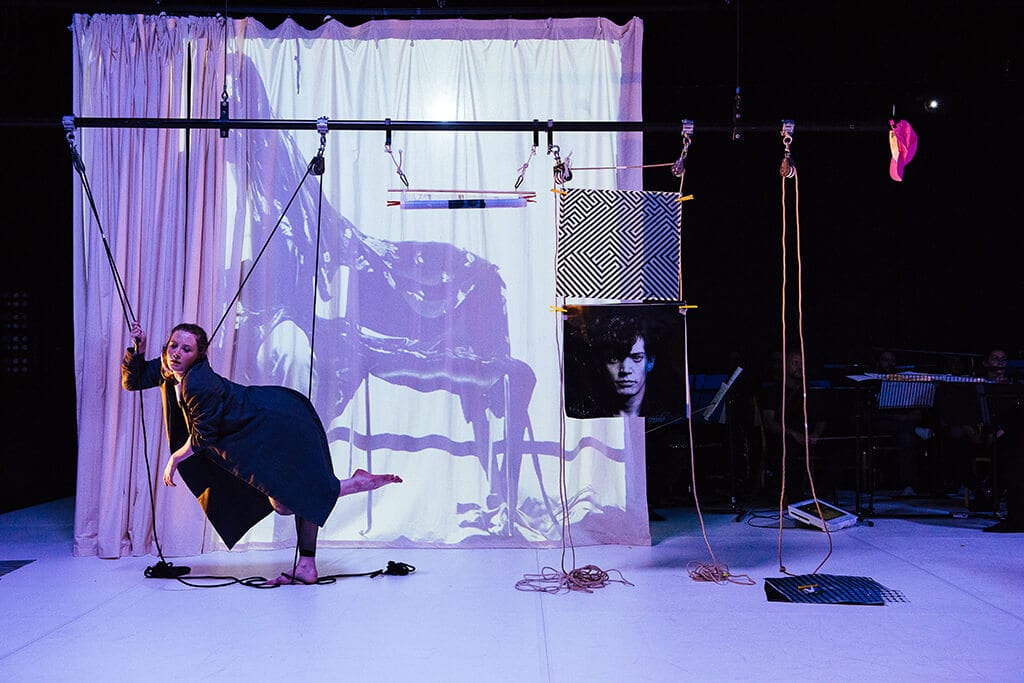 What does the controversial photography of Robert Mapplethorpe have in common with the life cycle of a Monarch butterfly? Both are sources of inspiration for Scottish Dance Theatre’s exploration of metamorphosis: Velvet Petal. This production, first performed in Mexico in 2016, premiers on home soil this weekend. The pieces follows characters including Jessie and Francesco, who are trying to comprehend the place of the everyday in history, the role of individuals in creating the bigger picture. Jessie wonders if one day, nothing will remain of her but photographs that no one can put a name to – she spells her name out, trying to make her mark.
What does the controversial photography of Robert Mapplethorpe have in common with the life cycle of a Monarch butterfly? Both are sources of inspiration for Scottish Dance Theatre’s exploration of metamorphosis: Velvet Petal. This production, first performed in Mexico in 2016, premiers on home soil this weekend. The pieces follows characters including Jessie and Francesco, who are trying to comprehend the place of the everyday in history, the role of individuals in creating the bigger picture. Jessie wonders if one day, nothing will remain of her but photographs that no one can put a name to – she spells her name out, trying to make her mark.
What follows is an exuberant exploration of the changes we undergo in our daily lives. Clothes rails move across the stage, the dancers putting on and casting aside oversized jackets, retro playsuits, and brightly coloured petticoats. Torben Lars Sylvest’s energetic soundtrack pulses with works by Spoek Mathambo, Fourtet, and LCD Sound System. Some of the transitions between songs are a little jarring, but perhaps they’re meant to be. Fleur Darkin’s choreography blurs hip-hop and contemporary dance with a lot of enthusiastic head banging.
There are photographs suspended in front of, and alongside the dancers. These images become layers of chrysalis, just like the clothes. One dancer stands beside a larger-than-life photo of herself in a suit. The suit makes her feel like the strongest version of herself, she says, or does it? Only by removing these layers of image and costume can each butterfly dancer emerge from their chrysalis as a monarch.
Francesco is lying on a mattress contemplating whether to get up or not, wondering who he’d like to be. He keeps changing position, and can’t get comfortable. His is a gently amusing existential crisis. It is also a performance about secrets and sexualities. Mapplethorpe’s homoerotic photography sparked controversy in the late 1980s. Francesco’s relationships with the other dancers, both male and female, becomes increasingly intimate and exultant. One of the men Francesco writhes with on the mattress says, ‘I want everyone to fuck’ so that there are no more secrets, no controversy to sexuality. When all the dancers and costumes are gone, all we are left with is Francesco, a mattress and a bare clothes rail. No secrets. He drapes himself across it, the choreography akin to slow-motion acrobatics as he peels away layers of clothing and suspends himself from the rail, his skin the only available costume, character, self, that remains.
These character sketches draw me in, leaving a far greater impression than the upbeat but slightly repetitive ensemble pieces. That said, these ensemble pieces lend a sense of celebration to each character’s metamorphosis, so that scenes which might otherwise be painfully intimate and private, tremble with the giddy joy of discovery.

